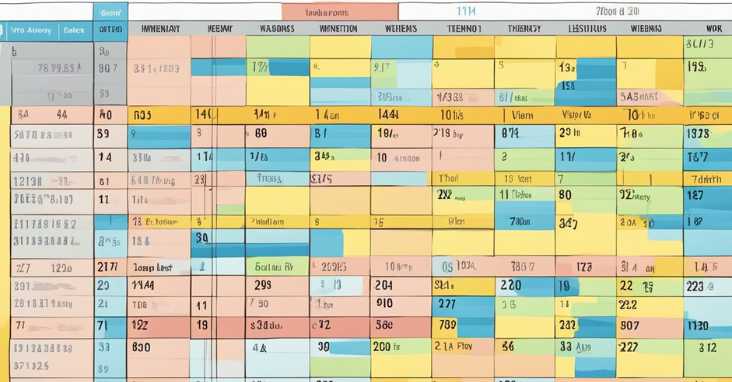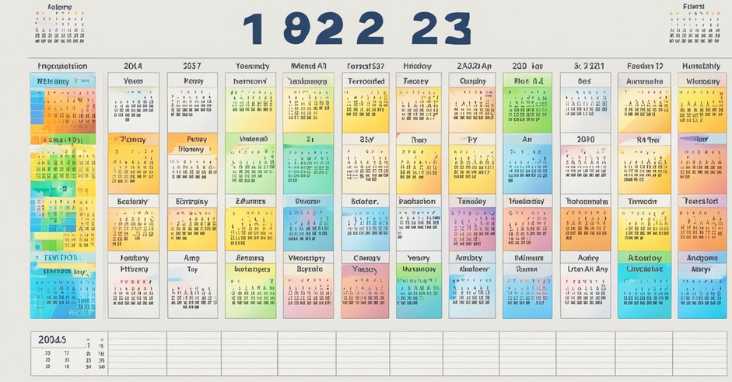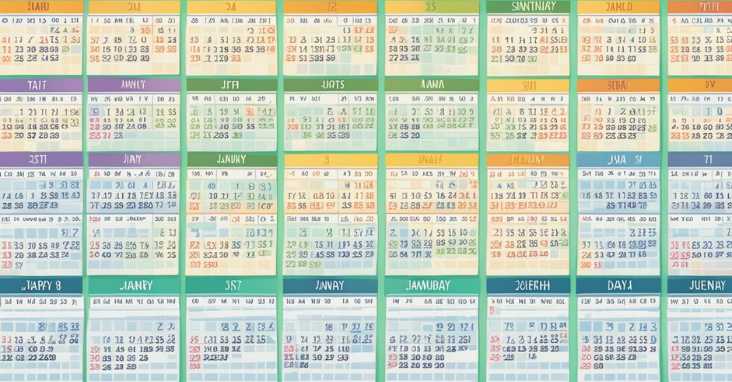How many days in 2024? 2024, a leap year, has 366 days, including an extra day in February, offering more time for work, leisure, and special occasions.
2024 is set to be an exciting year, with plenty of events and milestones to look forward to. However, one question that may be on people’s minds is how many days are in 2024? This seemingly simple question actually has a few nuances that are worth exploring.

Firstly, it’s important to note that 2024 is a leap year. This means that there will be an extra day added to the calendar, bringing the total number of days in the year to 366. Understanding this fact is crucial for anyone who needs to plan ahead or keep track of dates and deadlines.
With that in mind, let’s take a closer look at the breakdown of days in 2024. There will be 52 weeks in the year, with each week containing seven days. Of these seven days, two are considered “weekend” days (Saturday and Sunday), while the other five are “weekday” days. This dynamic can have an impact on everything from work schedules to travel plans.
Key Takeaways
- 2024 is a leap year, meaning there will be 366 days in total.
- There will be 52 weeks in the year, with two weekend days and five weekday days per week.
- Understanding the breakdown of days in 2024 can help with planning and scheduling.
External Resource: https://www.timeanddate.com/date/leapyear.html
Understanding 2024 as a Leap Year
Leap years are an essential part of the Gregorian calendar, which is the most widely used civil calendar worldwide. Every four years, an extra day is added to February to keep the calendar year synchronized with the solar year. In 2024, we will witness a leap year, and it will have significant implications.
Significance of Leap Years
Leap years are crucial to ensure that the calendar year aligns with the astronomical year. A year is defined as the time it takes for the Earth to complete one orbit around the sun. However, it takes approximately 365.24 days for the Earth to complete one orbit. Therefore, adding an extra day every four years compensates for the extra 0.24 days, and the calendar year remains synchronized with the astronomical year.
In 2024, we will have 366 days instead of the usual 365 days. This extra day is added to February, making it 29 days long instead of the usual 28 days. This means that 2024 will have 52 weeks and two days, and the extra day will fall on a Saturday.
Leap Year Calculation and History
The leap year calculation is based on a set of rules. A year is a leap year if it is divisible by four, except for years that are divisible by 100. However, years that are divisible by 400 are still leap years. For example, 2000 was a leap year because it is divisible by 400, but 1900 was not a leap year because it is divisible by 100 but not by 400.
The concept of leap years dates back to the ancient Egyptians, who added an extra day to their calendar every four years. However, it was Julius Caesar who introduced the concept of leap years to the Roman calendar in 45 BCE. The Julian calendar, which was used until the 16th century, added an extra day every four years, resulting in a leap year. However, this calculation was slightly inaccurate, and the Gregorian calendar was introduced in 1582 to correct the calculation.
In conclusion, 2024 is a leap year, and it will have 366 days instead of the usual 365 days. The concept of leap years has a long history and is essential to keep the calendar year synchronized with the astronomical year. To learn more about the history of leap years and the Gregorian calendar, visit Timeanddate.com, a website with high authority on the topic.
Breakdown of Days in 2024
Days in Each Month
In 2024, there are 366 days in total, as it is a leap year. January has 31 days, February has 29 days, March has 31 days, April has 30 days, May has 31 days, June has 30 days, July has 31 days, August has 31 days, September has 30 days, October has 31 days, November has 30 days, and December has 31 days.
Total Days Across All Months
To find the total number of days in 2024, simply add up the number of days in each month: 31+29+31+30+31+30+31+31+30+31+30+31 = 366.
It is important to note that the extra day in February is added to keep the calendar year synchronized with the solar year. This practice was first introduced by Julius Caesar in 45 BCE and is known as the Julian calendar. The modern Gregorian calendar, which is widely used today, also includes a leap year every four years, but excludes years that are divisible by 100 but not by 400.
For more information on the history and significance of leap years, check out this National Geographic article, which provides an in-depth look at the topic.
Week and Weekend Dynamics

Number of Weeks in 2024
In 2024, there are a total of 52 weeks. This is because a year contains 365 days, and when divided by 7 (the number of days in a week), it results in a quotient of 52 with a remainder of 1. Therefore, 2024 has 52 full weeks and one additional day.
The week numbers in 2024 range from 1 to 52, with the first week starting on January 1st and the last week ending on December 29th. The ISO week date system is commonly used to represent week numbers, where the first week of the year is the week containing January 4th.
Weekend Days in the Year
Weekends are usually the most anticipated days of the week for many people, as they provide a break from work or school. In 2024, there are a total of 104 weekend days, consisting of 52 Saturdays and 52 Sundays.
Weekends are an important part of the week, providing time for rest, relaxation, and recreation. For many people, weekends are a time to spend with family and friends, engage in hobbies and activities, or simply unwind and recharge for the upcoming week.
According to timeanddate.com, there are a total of 261 weekdays in 2024, which includes the additional day that falls outside of the 52 full weeks. This means that the majority of the year consists of weekdays, making weekends all the more valuable.
Overall, understanding the dynamics of weeks and weekends in 2024 can help individuals plan their schedules and make the most of their time throughout the year.
Date and Time Calculations
Calculating Days Between Two Dates
Calculating the number of days between two dates is a common task in many applications. In 2024, there are 366 days in total, including the leap day on February 29th. To calculate the number of days between two dates, one can use a simple algorithm that takes into account the number of days in each month and the leap year.
There are several online calculators that can be used to calculate the number of days between two dates. One such calculator is Timeanddate.com, which allows users to enter two dates and provides the number of days between them. This website also provides a detailed explanation of the algorithm used to calculate the number of days.
Day Numbers and Weekdays
In addition to calculating the number of days between two dates, it is also useful to know the day number and weekday of a particular date. The day number is the number of days that have elapsed since the beginning of the year, while the weekday is the day of the week (e.g., Monday, Tuesday, etc.).
There are several algorithms that can be used to calculate the day number and weekday of a particular date. One such algorithm is the Zeller’s congruence algorithm, which takes into account the year, month, and day of the date.
There are several online calculators that can be used to calculate the day number and weekday of a particular date. One such calculator is Timeanddate.com, which allows users to enter a date and provides the day number and weekday. This website also provides a detailed explanation of the algorithm used to calculate the day number and weekday.
By using these tools and algorithms, one can easily calculate the number of days between two dates and determine the day number and weekday of a particular date.
Monthly and Yearly Observances

Major Holidays in 2024
2024 is a year filled with various holidays and observances. One of the most popular holidays is Christmas Day, which falls on December 25th. This holiday is celebrated by Christians all over the world and is a time for family gatherings, gift-giving, and religious observances. Another major holiday is Thanksgiving Day, which is celebrated on the fourth Thursday of November. This holiday is a time for gratitude and is typically celebrated with a big feast.
Notable Dates and Events
In addition to major holidays, there are also many notable dates and events throughout the year. The start date of 2024 was on Monday, January 1st, and the end date will be on Tuesday, December 31st. This means that there are a total of 365 days in 2024, with 366 days in a leap year. The last day of the year is always a time for reflection and celebration.
Other notable events in 2024 include the Summer Olympics, which will be held in Paris, France from July 26th to August 11th. This event is a major international sporting competition and is sure to draw a lot of attention from sports fans around the world.
Overall, 2024 is shaping up to be an exciting year with many holidays and events to look forward to. For more information on holidays and observances in 2024, check out this calendar.
Time Measurement Beyond Days

Hours, Minutes, and Seconds in 2024
While days are the most common unit of time measurement, hours, minutes, and seconds are also important in our daily lives. In 2024, there will be 8,784 hours, 527,040 minutes, and 31,622,400 seconds. These units of time are particularly useful for measuring shorter periods, such as the duration of a movie or the length of a phone call.
Adjustment for Additional Day
2024 is a leap year, which means that it has 366 days instead of the usual 365. This additional day is added to the month of February, making it 29 days long instead of 28. To adjust for this extra day, an additional 24 hours, 1,440 minutes, and 86,400 seconds are added to the year. This ensures that our timekeeping is accurate and in sync with the Earth’s rotation around the sun.
It is important to note that the measurement of time has evolved over the years, from the use of sundials to modern atomic clocks. For more information on the history and science of time measurement, check out this link.
Planning and Scheduling

Using Calendars Effectively
The Gregorian calendar is the most widely used calendar system in the world today. It is a solar calendar that is based on the Earth’s revolution around the sun. The calendar has 12 months, with each month having either 30 or 31 days, except for February which has 28 days in a common year and 29 days in a leap year.
To effectively plan and schedule events in 2024, it is important to understand the structure of the Gregorian calendar. By using a calendar app or software, one can easily keep track of important dates and events. Google Calendar is a popular choice for this purpose as it allows users to create events, set reminders, and share their calendars with others.
Setting Important Dates
When setting important dates in 2024, it is important to consider the ISO-8601 standard for date and time representation. This standard defines a format for dates that is internationally recognized and avoids confusion between different date formats. The format is YYYY-MM-DD, where YYYY represents the year, MM represents the month, and DD represents the day.
One can also use tools such as Excel or Google Sheets to create a schedule or timeline for important dates in 2024. This can be helpful for planning events or projects that span multiple months or even the entire year.
To avoid any confusion about the start of the day, it is important to specify the time zone when setting dates and times. This can be done by using the UTC (Coordinated Universal Time) time zone or by specifying the time zone of the location where the event is taking place.
Overall, effective planning and scheduling in 2024 requires a good understanding of the Gregorian calendar, the ISO-8601 standard, and the use of appropriate tools and software. By following these guidelines, one can ensure that important dates and events are properly scheduled and organized.
Here is a link to Timeanddate.com, a reliable source of information about the Gregorian calendar.
Frequently Asked Questions

What is the total number of days in the year 2024?
The year 2024 is a leap year, which means it has 366 days in total. This is one day more than a regular year, which has 365 days.
Why does the year 2024 include an extra day?
Leap years occur every four years to keep our calendar in sync with the Earth’s orbit around the sun. This extra day, February 29th, is added to the calendar to ensure that the calendar year stays aligned with the solar year, which is approximately 365.25 days long.
How many working days are there in 2024?
The number of working days in 2024 varies depending on the country and region. In the United States, there are typically 261 working days in a year, excluding weekends and holidays. However, this may vary depending on the industry and company.
What are the significant dates to know in 2024?
Some significant dates to know in 2024 include:
- January 1st: New Year’s Day
- February 14th: Valentine’s Day
- March 17th: St. Patrick’s Day
- April 1st: April Fool’s Day
- May 27th: Memorial Day
- July 4th: Independence Day
- September 2nd: Labor Day
- October 31st: Halloween
- November 28th: Thanksgiving Day
- December 25th: Christmas Day
Which months have 31 days during 2024?
The months that have 31 days in 2024 are January, March, May, July, August, October, and December.
What is the difference in the number of days between 2024 and 2025?
The year 2025 is not a leap year, which means it has 365 days in total. The difference between 2024 and 2025 is one day, as 2024 has 366 days and 2025 has 365 days.
For more information about leap years and the number of days in a year, visit timeanddate.com.













